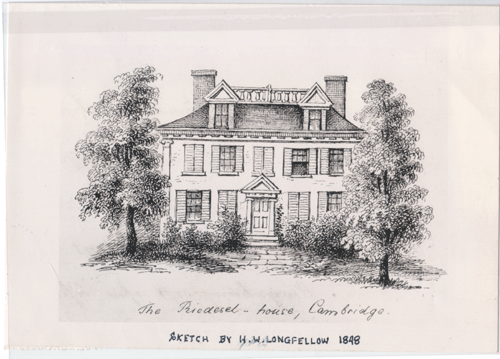“I went contentedly home & finishd my tea”
He cultivated a sense of detached irony in his letters. So much so that he can come across as barely able to rouse himself and find out what was going on.
Andrews wrote this letter on 18 Dec 1773, more than a day after the event, so he had a chance to digest it and polish his observations.
This extract picks up Andrews’s account as ship-owner Francis Rotch has returned from Milton with the not-unexpected news that Gov. Thomas Hutchinson wouldn’t let the Dartmouth carry its load of tea back to London.
upon readg it, such prodigious shouts were made, that induced me, while drinkg tea at home to go out, & know the cause of it, the [Old South Meeting] house was so crowded could get no further than ye porch, where I found ye moderator [Samuel Phillips Savage], was just declaring the meetg to be dissolvd, which causd another general Shout, outdoors & in, of three cheers; what wth that, & the consequent noise of breaking up the meetng, you’d tho’t the inhabitants of the infernal regions had broke loose.Conner was also mentioned (though not by name) in the Whig newspapers and in the Rev. Samuel Cooper’s report to Benjamin Franklin. Boston’s political leaders really wanted people to know the men who destroyed the tea (whoever they might be) were acting on principle and not for private gain.
for my part, I went contentedly home & finishd my tea, but was soon informd what was going forward, but still not crediting it without ocular demonstration, I went & was satisfied–
they mustered I’m told upon Fort hill, to the number of about 200 & proceeded, 2 by 2 to Griffins wharfe, where [the ships captained by James] Hall, [James] Bruce and [Hezekiah] Coffin lay, each with 114 Chests of the ill-fated article on board, the two former with only that article, but ye lattr arriv’d at ye wfe only ye day before, was freighted with a large quantity of other goods, which they took the greatest care not to injure in the least, and before nine O Clock in ye eveng, every Chest, from on board the 3 vessells, was knocked to pieces and Flung over ye sides–
they say the actors were Indians from Naragansett, whether they were, or not, to a transient observer they appeard as Such, being cloathd in Blankets, wth their heads muffled & copper colord countenances, being each arm’d with a hatchet or axe or po [pair of] pistols, nor was their dialect different from what I conceive those geniueses to speak, as their jargon was uninteligible to all but themselves–
not the least insult was offerd to any person, save one Capt [Charles] Conner, a letter of horses in this place, not many years since immergd from dear Ireland who had ript ye lining of his coat & waistcoat under the arms, and watchg his oppoty had nearly filld ’em wth tea, but being detected, was handled pretty roughly, they not only Stript him of his cloaths, but gave him a coat of mud, wth a severe bruising into the bargain, & nothing but their utter aversion to make any disturbance prevented his being tard & featherd.
(The depiction of the Tea Party above comes courtesy of the Boston Athenaeum, where I’m typing these words. It was engraved in 1856 by John Andrew, who I don’t think was any relation to the merchant.)






